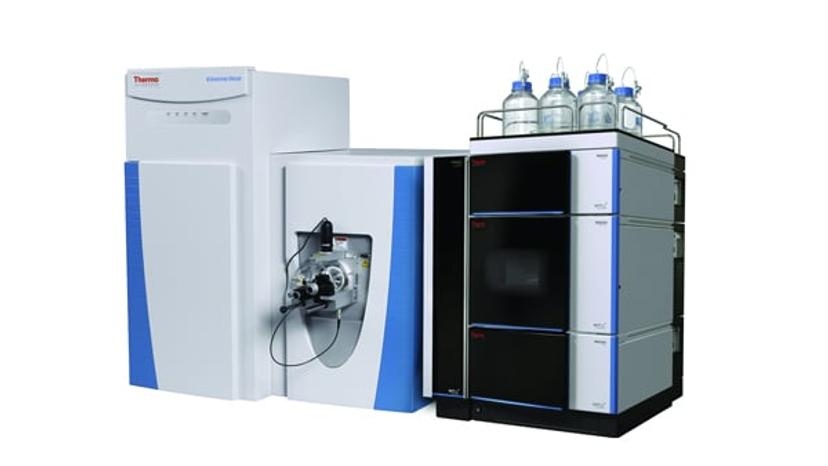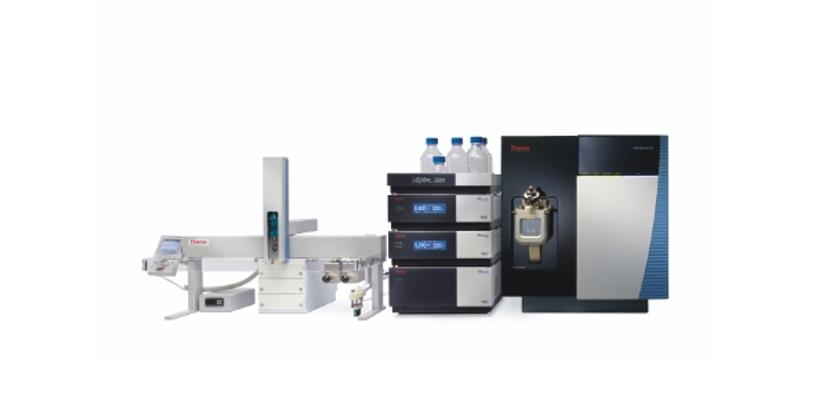Mass Spectrometry Inventor, Alexander Makarov, Explains How State-of-the-Art MS is Being Utilized in World Leading Anti-Doping Laboratories
Thermo Fisher Scientific’s Director of Global Research discusses the use of mass spectrometry at the Hong Kong Jockey Club
8 Dec 2016

Professor Alexander Makarov, Director of Global Research, Thermo Fisher Scientific
The Hong Kong Jockey Club is one of the largest and most well respected flat racing organizations in the world. The Club has a world class drug-testing facility, on site at the Sha Tin Racecourse. This internationally accredited laboratory uses state-of-the-art mass spectrometry (MS) to test for the presence of prohibited substances. The Club invited Thermo Fisher Scientific’s Director of Global Research, Alexander Makarov, inventor of the Thermo Scientific™ Orbitrap™ mass spectrometers, to speak at their 130th Anniversary.
Professor Makarov is an award winning scientist, receiving, amongst others, the Thomson Medal of International Mass Spectrometry Foundation in 2012, the 2008 ASMS Distinguished Contribution in Mass Spectrometry Award and the 2007 Gold Award of the Russian Society for Mass Spectrometry. In this interview, Professor Makarov tells SelectScience® more about Thermo Fisher’s partnership with the Hong Kong Jockey Club.
SS: Can you tell us more about the Hong Kong Jockey Club?
AM: The Hong Kong Jockey Club has a world class equine drug-testing facility. It occupies 1,700 m2 of floor space and is equipped with approximately $8 million worth of lab equipment, including 24 state-of-the-art mass spectrometers.
I visited the facility for the first time earlier this year and I was in awe of the sheer scale of the complex. It is a very modern laboratory, with an exceptionally well qualified team. When I visited the lab it was clear that they had a very thorough understanding of the technology and they were also developing their own methods and processes. In fact they had a whole list of questions about the new challenges they are facing in sports doping control, and were very interested in where and how we are advancing Orbitrap technology to help them meet those challenges.
From the very beginning, with the first Orbitrap analyzers, we worked to develop our expertise in the field of anti-doping. There is a distinct need for very high sensitivity, highly accurate doping analysis in the sporting field. The results are needed very quickly, and the cost of error is huge – both in terms of reputation and financial repercussions. High resolution mass spectrometry (HRMS) allows us to generate a lot of full scan data, with very high sensitivity. It is very easy to use, with robust analysis and a smaller footprint.
SS: As the inventor of the Orbitrap mass spectrometer, could you tell us about your background and the origins of this exciting new mass spectrometry technology?
AM: I was born in the Siberian town of Irkutsk, before completing my higher education in Moscow. When the Soviet Union collapsed, and scientific research along with it, I moved to the UK.
It was in the UK that I started working with friends, in a small high-tech company called HD Technologies. From this company, I began working on the Orbitrap product concept. This company was acquired by Thermo Fisher in 2000 and this allowed us to expand the team and really develop the technology.
Now based in Bremen, the commercial release of the first liquid chromatography/mass spectrometry (LC/MS) Orbitrap platform was in 2005. Two gas chromatography/mass spectrometry (GC/MS) versions were subsequently released in 2015 and 2016. The increasingly sophisticated Orbitrap family now includes the top-tier Thermo Scientific™ Orbitrap Fusion™ mass spectrometers, as well as the bench top more affordable Thermo Scientific™ Q Exactive™ mass spectrometer and the Thermo Scientific™ Orbitrap Elite™ Hybrid Ion Trap-Orbitrap mass spectrometer.

The Thermo Scientific™ Q Exactive™ Focus mass spectrometer
SS: How are you and your team working to further develop the technology for scientists?
AM: I am now the Director of Global Research in Life Sciences Mass Spectrometry for Thermo Fisher Scientific. Since 2013 I have held the role of Professor of High Resolution Mass Spectrometry at the Department of Chemistry and the Bijvoet Center, Utrecht University. At Thermo Fisher, I am responsible for long term high resolution accurate mass (HRAM) projects, mostly involving Orbitrap technology.
I am a physicist, with a PhD in mathematical physics. I have experience in experimental physics, however I am now involved in all areas of instrumentation design. Our instruments are incredibly complex, but this isn’t the tricky bit for our team of global experts. The real challenge is in bringing this complex technology to the routine labs, enabling scientists to be able to easily use our platforms, and freeing up their time and expertise to analyze the results.
The Orbitrap technology has helped revolutionize cell biology and translational research; we’ve also made the technology more available for real life applications. These systems are now deployed worldwide to measure drug use and monitor fair competition; as well as identify pesticides in our food.
SS: What technological challenges do testing labs face in the field of anti-doping?
AM: One of the biggest challenges regulators face is keeping ahead of the cheats. Every week there are newly discovered compounds that need to be prohibited, and we aim to catch them all. So much effort and ingenuity has gone into the design of these drugs, and they are not always easy to detect.
It used to be that competitors were tested randomly throughout a sporting event and that not everyone was tested. However, with every new generation of instruments, the number of analytes we can measure increases dramatically, as well as the throughput capacities of the system. The multi-channeling capacities of modern MS workflows leveraging technology like Thermo Scientific™ Transcend™ II HPLC and online sample prep system means we can now process enough samples to ensure rigorous testing, not only testing all competitors, but including several points of analysis for each athlete.
Other challenges include the emergence of new synthetic drugs and dealing with the wide variety of biological sample matrices. The screening and quantitation of drugs in horse urine is challenging for several reasons. There are many similar molecules present in these samples, as well as matrix interference issues and significant sample-to-sample variations due to the nature of the matrix.
Additional bottlenecks occur at the point of sample collection, but this is more the responsibility of the race officials.

The Thermo Scientific™ Transcend™ II System with Multi-channel and TurboFlow™ Technology
SS: What are the key advantages of using Orbitrap HRAM (high resolution accurate mass) LC-MS to test for use of illegal doping substances?
AM: HRAM has very high sensitivity and analytical selectivity, and thanks to modern ion sources, can follow very fast separations. This technology can trace peaks reliably, with much higher confidence due to accurate mass. We can also separate analytes present at very low concentrations.
Orbitrap technology makes these measurements at the highest resolutions commercially available and without lock mass or external calibrations. These simple, powerful results allow determination of current and new synthetic drugs in a variety of complex matrices such as horse urine. The newer, faster version of the Orbitrap analyzer allows this to be done with the fastest LC methods or in some cases without LC separations at all.
Another key advantage in the field of anti-doping is the ability for us to store large amounts of data that can be retrospectively analyzed if a new analyte of interest is discovered.
SS: How do you see the field of anti-doping progressing over the next few years?
AM: We will continue to see increasing demands for testing in the field of anti-doping, which we will match with increased throughput ability. HRAM MS will continue to become a much more routine and cost effective way to analyze samples.
In equine testing specifically, we all see a rising concern regarding the use of cobalt to improve athletic performance. Cobalt is known to stimulate red blood cell production and improve oxygenation (in humans). Since this substance is not routinely tested for by anti-doping labs, its use in horse racing has increased. There is therefore an increasing need to develop test methods using ICPMS (inductively coupled plasma mass spectrometry) for the accurate detection of cobalt in horses.
Because equine testing is such a complicated test matrix, we may see a shift in the types of samples used for testing. Hair analysis is becoming increasingly of interest for human drug testing, as it contains a more accurate reflection of present and past drug use. Hair is also a more stable matrix that doesn’t require refrigeration. Hair drug testing is more frequently considered for human testing, but is also being considered for applicability to the testing of race horses. In fact, in August 2016, it was announced that out-of-competition hair testing for clenbuterol, would be carried out on all horses competing in the 2016 Bank of America Challenge Championships.
For humans, protein therapeutics are more frequently being employed as doping drugs and the Orbitrap technology is perfectly suited to making those types of measurements, in fact it is the most published instrument for protein analysis of this type. Broad metabolic testing can also further the value of HRAM MS by identifying exogenous drugs, their metabolites, and their impact on the athlete in a single analysis.
In an effort to beat our technology, those involved in competitive sports will continue to shift to new classes of drugs. However, I have to say we are now very well equipped for this fight. The areas for continued improvement are in sample collection procedures, the development of universal methods for chromatography, and in the ability to run multiple tests simultaneously.
Our technology is world class; we are definitely on the winning side of the fight against doping!
Related reading
Editorial article: Keeping Sports Clean: Unique Chemical Fingerprinting of Cheaters, an exclusive interview with Professor Scott Stanley, at the University of California-Davis, School of Veterinary Medicine.
Application Note: Detection of Stanozolol Glucuronides in Human Sports Drug Testing by Means of High-Resolution, Accurate-Mass Mass Spectrometry
Related videos
Interview: Mass Spectrometry Enables Top WADA Lab to Beat the Cheats
Interview: Exclusive World Cup Anti-Doping Interview: Analyzing Footballers with Mass Spec


